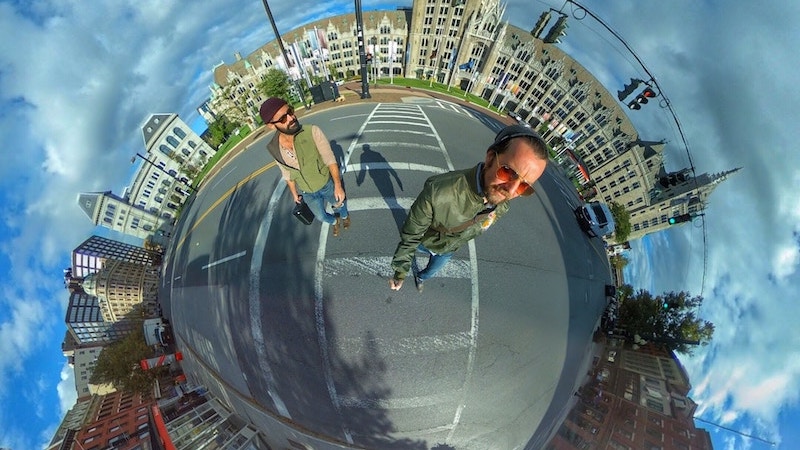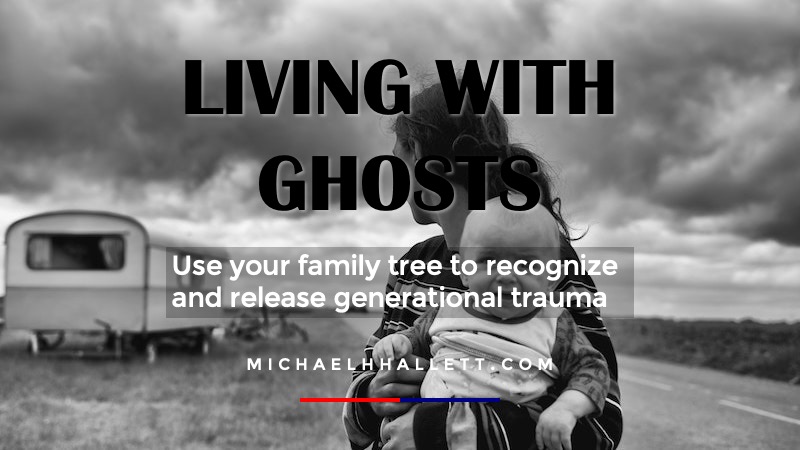How to do a 360-degree generational trauma evaluation
- 18 May 2023
- Posted by: Michael H Hallett
- Category: Generational trauma , How-to & step-by-step ,

I was recently, and rather painfully, forced to revisit a trauma that I thought was done and dusted. I realised afterwards that I hadn’t viewed the trauma from the perspective of every participant—only that of who I mistakenly thought of as the ‘main’ participant. This problem can be avoided through a 360-degree evaluation of the trauma.
What is a 360-degree evaluation?
Wikipedia defines a 360-degree evaluation (or 360° feedback) as follows:
“360-degree feedback (also known as multi-rater feedback, multi source feedback, or multi source assessment) is a process through which feedback from an employee’s subordinates, peers, colleagues, and supervisor(s), as well as a self-evaluation by the employee themselves is gathered.
360-degree feedback is so named because it solicits feedback regarding an employee’s behaviour from a variety of points of view (subordinate, lateral, and supervisory).”
There are various templates in the business world for 360° feedback.
The Toastmasters International public speaking and leadership development organisation uses this tool for some of its high-performance project assessments. Members are assessed on various traits, including Leadership, Communication, Problem Solving and Reliability.
By soliciting feedback from a variety of people involved in a project, we gain a fuller understanding of ourselves and may glimpse opportunities for self-improvement.
The same applies to the murky world of generational trauma.
Gloucester Road, circa 1935
In April 1930, four years after the death of his first wife, my father’s father, Charles, married Bernice Chenhalls. A cutting from the Western Mail & South Wales News notes it was the first wedding at the new Wesleyan Chapel at Rhiwbina, Cardiff. Charles’ father played the organ.
The newlyweds moved, with my father (aged 8), to a house in Gloucester Road, Bristol. It was above the pie shop owned by Bernice’s father. There are surviving seaside snaps of a happy triptych of father, son, and stepmother. No indication of the looming rupture.
The exact date has been lost to family lore, erased by its shameful nature. One day Charles walked out of the Gloucester Road apartment and never returned. The reasons for his disappearance are as unknown as its date, but they don’t ultimately matter.
What mattered was the shattering impact on my father of this abandonment, coming on the heels of the loss of his mother when he was 4.
Some years ago, during a wellbeing workshop in Bristol, I accessed my father’s unprocessed feelings of abandonment. (Returning to the locations of family traumas is one of my 12 Principles for clearing generational trauma.)
I didn’t realise there were three other traumas that I hadn’t recognised.
Applying a 360-degree evaluation to generational trauma
The first of these was a huge blow to my father’s sense of worthiness.
The second was Charles’ sense of guilt, shame, and self-loathing. To feel that the only move available in your life is to abandon your only son to your stepfamily is to truly live between a rock and a hard place.
And the third was Bernice’s feelings of abandonment, loss, unworthiness, and uncertainty.
Traumatic events are rarely experienced singularly. There are usually—especially with family trauma—multiple people involved. A 360-degree evaluation will identify them.
Think of the traumas in your family’s skeleton closet. Who was involved, even peripherally? Think of the blast radius of the traumatic event. Who was caught in the fallout?
Once you’ve identified the participants, identify how each was affected. List the various key forms of emotional cost of generational trauma:
- Abandonment
- Emotional shame
- Sexual shame
- Grief
- Shock
- Denial
- Low self-worth (including guilt)
- Arrested development
- Energetic disturbances
Once you’re collated your 360° evaluation, the hard part begins—reconnecting with those traumas, choosing to feel the unprocessed pain, and laying these ghosts to rest.
You might just want to take a road trip to your family’s equivalents of an apartment above a pie shop in Gloucester Road, Bristol.

